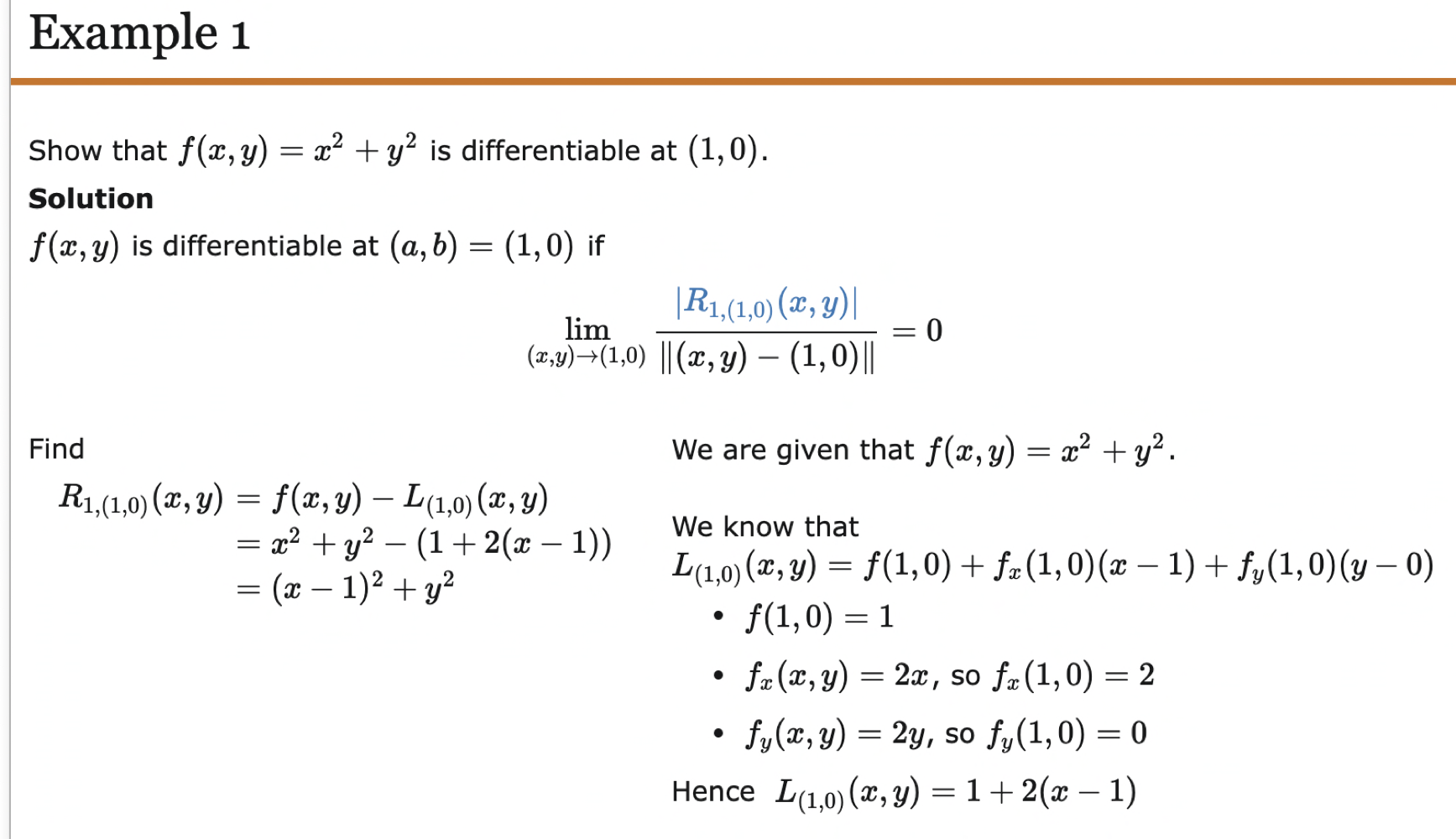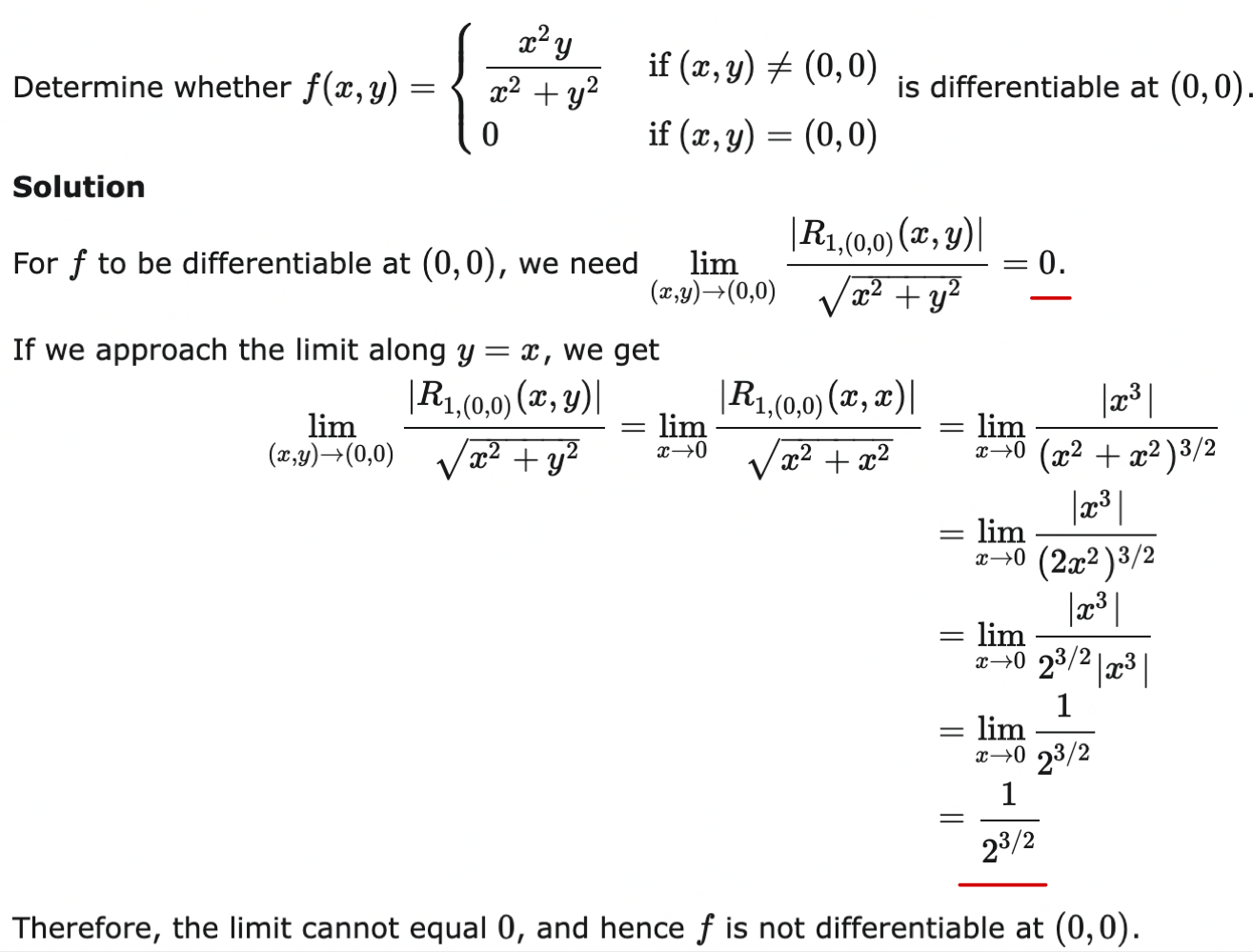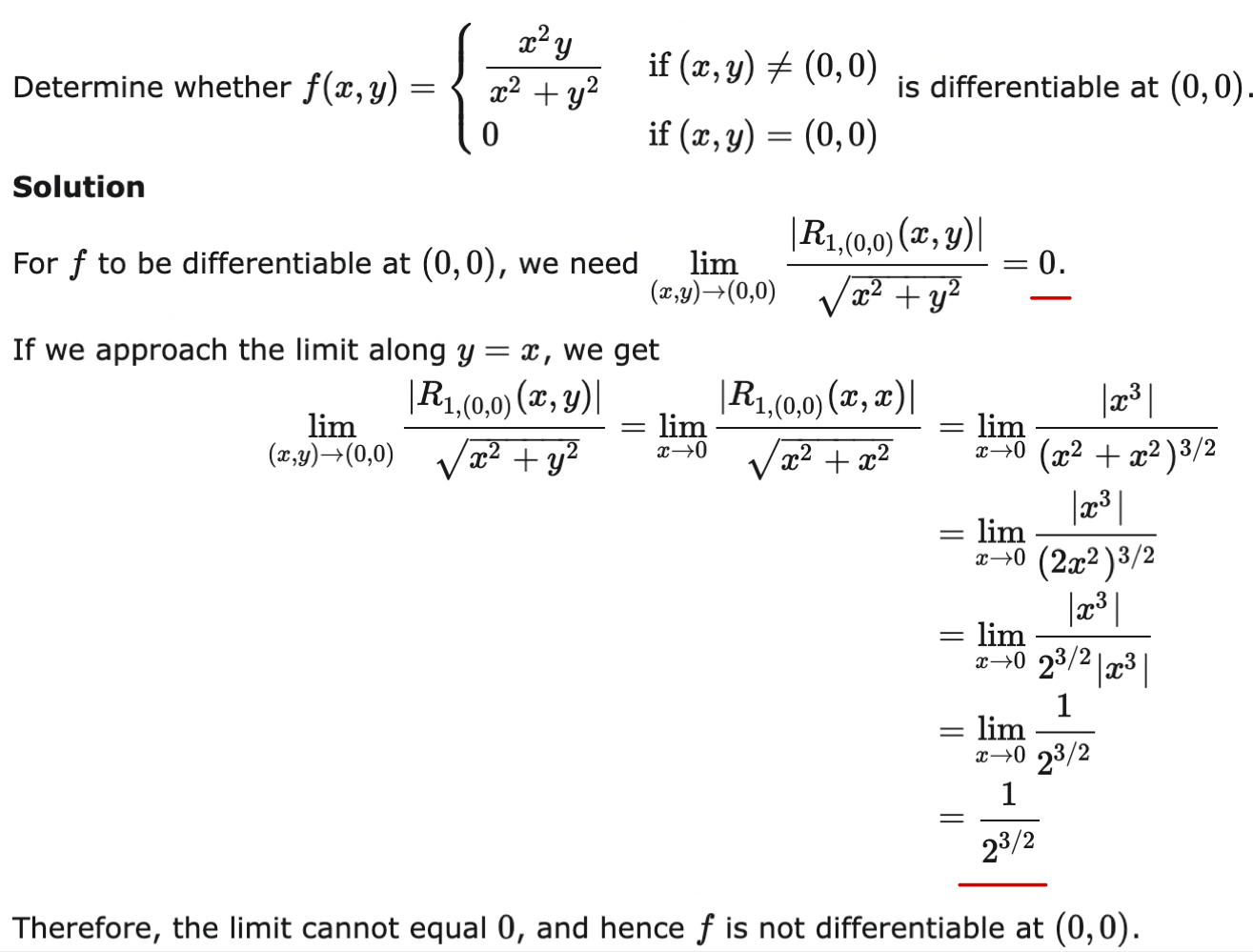Answered step by step
Verified Expert Solution
Question
1 Approved Answer
fExample 1 Show that f(x, y) = x2 + y is differentiable at (1, 0). Solution f(x, y) is differentiable at (a, b) = (1,0)






Step by Step Solution
There are 3 Steps involved in it
Step: 1

Get Instant Access to Expert-Tailored Solutions
See step-by-step solutions with expert insights and AI powered tools for academic success
Step: 2

Step: 3

Ace Your Homework with AI
Get the answers you need in no time with our AI-driven, step-by-step assistance
Get Started


